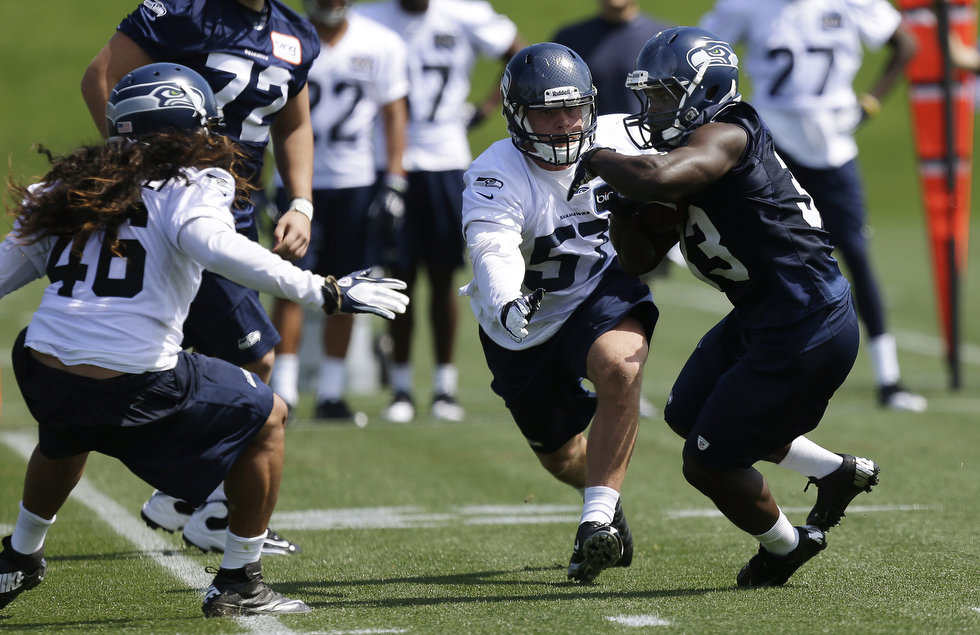The outcome surprises nobody, but it’s never about the score, facing an outmanned opponent in a first game.
The Ducks handled their business and played with enthusiasm and purpose. They racked up 772 yards of offense and didn’t have a turnover. They only had 5 penalties for 42 yards, but unfortunately that total included a 15-yard targeting penalty against Terrance Mitchell that got him ejected from the game.
My guys: Marcus Mariota looked in command and displayed leadership in the first start of his sophomore season, but appeared to press on some throws. The Ducks rode a big physical advantage to an easy 66-3 victory. (USA Today photo)
In a way it’s good that happened–it’s a teachable moment for the whole defense, and it happened in a game where the Ducks needed to empty the bench anyway. It happened in the first half, which is doubly good, because a second-half targeting foul results in the player having to sit the first half of the next game.
The call on Mitchell was correct–he slammed into a sliding quarterback with his helmet and shoulder, a classic application of the rule. But the new rule is problematical: it requires defensive players to calculate vectors at the speed of the game. Is the ball carrier going to duck? Will the receiver catch the pass? Do I need to blast the guy or let up? Player safety is the most important thing in the game, but at some point in the season a PAC-12 contender is going to lose a key player in a big game simply because he was trying to make a tackle. Sometimes the referees make a thorough botch of routine calls, and this rule requires a lot of judgment.
After the call, however, the Ducks young cornerbacks were going for the waist and the legs and wrapping up. Players like Ronnie Lott and John Boyett would’ve had to make drastic changes to their games under the current rules, and so will Oregon’s hard-hitting secondary.
It was a mixed grade for much of the team, and coaches will have plenty of video for teaching and instruction. Marcus Mariota wound up with decent stats and operated the offense efficiently, opening the game with five straight touchdown drives and a field goal, all under two minutes. He sailed some passes and threw others on the run under pressure, completing less than 50% in the first half.
Mariota got into more of a rhythm after the break, finishing the game 12-21 234 yards and a touchdown while rushing for 113 yards on five carries with two more scores. Those are numbers that, in a blowout, won’t hurt him in a Heisman race. It really does look like the Ducks have opened up the downfield passing game more this season: he had a completion to Huff for 46, Lowe for 40, Addison for 27 and a touchdown.
De’Anthony Thomas ran effectively and was Oregon’s workhorse and lead back early in the game. In all he darted for 128 yards on 18 carries, a 7.1-yard average. Like many teams will, Nichols kicked away from him both times.
Offensively, the biggest bright spot was Byron “Smash” Marshall. After off-season speculation about whether the Ducks would be able to replace Kenjon Barner in the running game the Ducks had a school-record three 100-yard rushers, Marshall joining The Black Momba and Mariota with 124 yards on 8 carries, a day that included a 49-yard touchdown sprint and an 47-yard scamper around right end, Byron pushed out of bounds by a defender with an angle at the three. The 5-10, 207-lb. sophomore showed speed many doubted he had, breaking tackles and running hard, backing up what coaches had said about him in fall practice.
Defensively, the Ducks have work to do. Young players like DeForest Buckner, Torrodney Prevot and Arik Armstead showed some potential and the defensive line got a lot of pressure on the Nicholls quarterbacks, but it was an uneven effort by the defense as a whole. Nicholls gained chunks of yards between the 30s. For the game the FCS school, 2-20 in the last two years, had 22 first downs and 343 yards. They had the ball for 40:14, averaging 5.1 yards per pass and 2.4 on the ground.
In particular the linebackers have more work to do. Their undermanned opponent did most of their damage throwing underneath, screens, swings, drag routes and draws. Running back Marcus Washington had 11 catches for 92 yards, something that PAC-12 coaches will notice on film. Against better competition the Ducks will have to tighten up their coverage and reactions. The Colonels threw the ball 50 times and didn’t suffer an interception. Last year the Ducks picked off 26 balls, tops in the nation. They did force two fumbles, the only turnovers of the game.
In their home opener Virginia beat BYU 19-16. The Ducks travel to Charlottesville next weekend for a much sterner test. Improvement between game one and game two is crucial, particularly for a team with high ambitions.
Add The Sports Daily to your Google News Feed!
